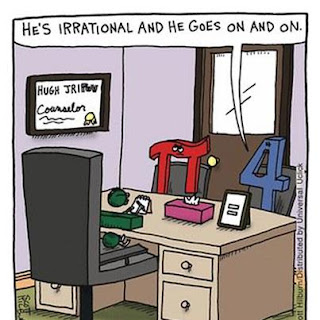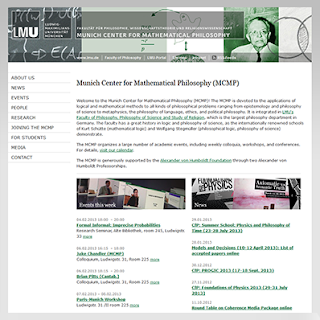Posts
Showing posts from February, 2013

Posted by
Unknown
MCMP goes Coursera!
- Get link
- Other Apps
Posted by
Jeffrey Ketland
Post-Docs in Philosophy of Canonical Quantum Gravity
- Get link
- Other Apps
Posted by
Vincenzo Crupi
The logic and psychology of confirmation and information search
- Get link
- Other Apps

Posted by
Catarina
What does it mean to be irrational?
- Get link
- Other Apps
Posted by
Catarina
Review of Mancosu's 'The Adventure of Reason'
- Get link
- Other Apps
Posted by
Jeffrey Ketland
Amsterdam Workshop on Truth (13-15 March 2013)
- Get link
- Other Apps

Posted by
Unknown
MCMP website relaunched!
- Get link
- Other Apps
Posted by
Jeffrey Ketland
Mathematics as "Pretense"?
- Get link
- Other Apps
Posted by
Jeffrey Ketland
States
- Get link
- Other Apps